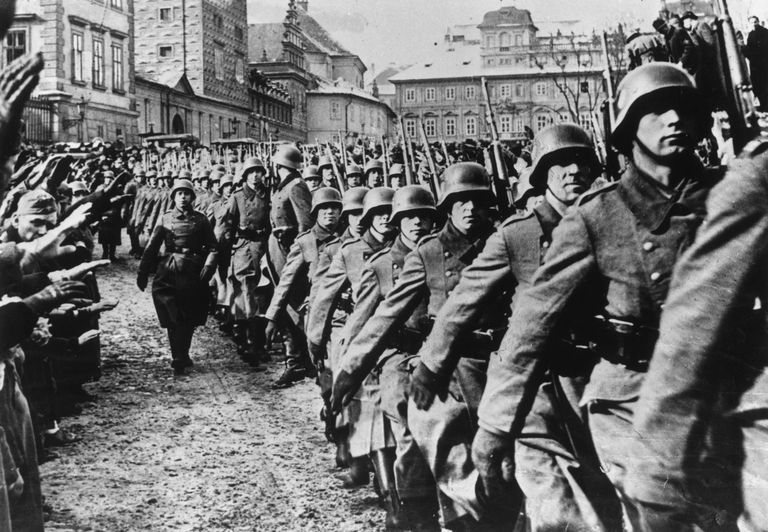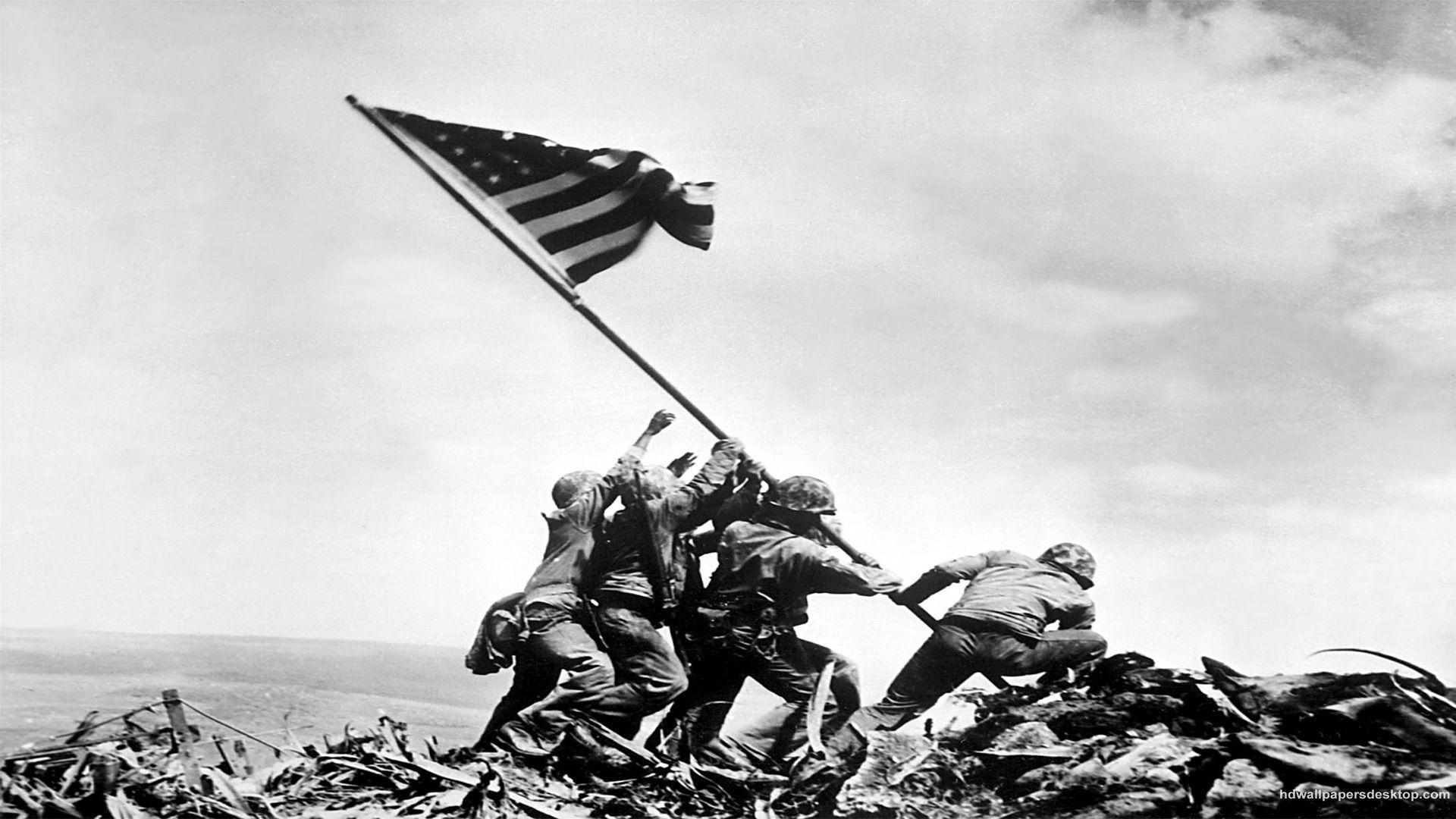
Introduction
Twenty years after the end of WWI, a new global conflict erupted in Asia in 1937 and Europe in 1939. Following a succession of Axis triumphs, the Allies captured and liberated Asia and Europe’s seized areas.
The Second World War pushed the concept of total war to its limits: because of the ideological character of the battle, it was no longer a question of defeating but of annihilating the adversary. Massacres were committed, and Jews and Gypsies were subjected to genocide.
Following the defeat of 1940, France’s population was divided. While the vast majority of French citizens maintained a wait-and-see approach, some opted to collaborate with the Nazis, particularly around Marshal Pétain, while others joined the Resistance, particularly around General de Gaulle.
A Global War
Germany invaded Poland on 1 September 1939. The United Kingdom and France declared war on one other two days later. The “phony war” then commenced, concluding on 10 May 1940 with the commencement of a rapid offensive, the Blitzkrieg (a military strategy consisting of a combination of bombing raids followed by a ground assault by tanks). Belgium, the Netherlands, Luxembourg, and France were attacked by the German army. Hitler did not succeed in entering the United Kingdom, despite his intensive bombing of the city.
Germany occupies Yugoslavia and Greece in 1941, as well as a portion of North Africa. Hitler violated the USSR’s non-aggression pact by initiating Operation Barbarossa and invading the USSR on 22 June 1941. Stalin counter-attacked when the German army arrived at the borders of Moscow and Leningrad. Europe was nearly fully ruled by the Nazis at the time (with the exception of Spain, Switzerland and Sweden, which were neutral).

On 7 December 1941, Japan, which had entered the war against China in 1937, attacked the American base at Pearl Harbor: Roosevelt obtained a vote from the US Congress to enter the war. Additionally, he grabbed a sizable portion of colonial lands in South-East Asia (Korea, the Chinese coastline, French Indochina, the Dutch Indies). Thus, the struggle escalated into a global war.
The United States’ admission into the war against Japan, Germany, and Italy altered the power balance. The United States’ economic, industrial, and military might be made it “the arsenal of democracies,” as President Roosevelt described it: it manufactured weapons and sold or supplied them to friends in order to battle the Axis forces.

The Atlantic Charter was signed in August 1941. Roosevelt and Churchill stated that the war’s objective was to annihilate the Axis armies (“destruction of Nazi dictatorship”) and to restore peace (“general security”, “disarmament”). The belligerents waged a total war (a struggle that involves the mobilization of all a state’s available resources), which harmed both civilians and troops, and increased the frequency of strategic bombings (massive bombings of arms factories, transport routes, and cities, intended to exhaust the enemy economically, militarily and morally).
From 1942 forward, the Axis powers’ advance came to a standstill. The American victory at Midway in June 1942 halted the Japanese march. The Allied victory at El Alamein in November 1942 drove the German soldiers out of Egypt. German Marshal Paulus surrendered in the Battle of Stalingrad in February 1943, following months of hard warfare.
In 1943, with the Anglo-American arrival in Sicily and the liberation of Corsica, the Allied counter-offensive gained momentum (October 1943). In June 1944, under the command of American General Eisenhower, the Allies landed in Normandy, followed by Operation Bagration, led by Soviet Marshal Zhukov. The objective was to trap Germany from the East and West, forcing it to surrender.
From 1944 forward, Nazi forces were retreating on all fronts. Following the Franco-American landing in Provence (August 1944), the Allies steadily liberated France, while the USSR reclaimed all of Germany’s Eastern European possessions. Hitler committed suicide in his bunker on 30 April 1945, as the Red Army advanced into Berlin. Germany acknowledges its capitulation in Reims and subsequently in Berlin on 7 and 8 May 1945.
The conflict continued in the Pacific Ocean, as Japan fought back against the American offensive. In 1945, the United States bombarded Japanese land on a large scale. In August 1945, American President Truman decides to deploy nuclear weapons: on 6 and 9 August 1945, Hiroshima and Nagasaki are bombed. On 15 August 1945, the Japanese emperor Hirohito announces the capitulation of Japan on the radio. This is the signature of the capitulation of Japan’s intervenes on September 2, 1945 in the bay of Tokyo.
War Of Annihilation

Hitler, who titled his book Mein Kampf (My Fight), believed that war was vital. It is how the strongest maintain their existence and power over the defeated. It must allow for the emergence of a racially pure “Aryan” society in which Jews and those deemed “abnormal” by the Nazis (disabled, homosexuals, etc…) would vanish.
Nazism was a war of conquest, colonization, enslavement, and, most importantly, annihilation (a conflict in which the aim was no longer simply to defeat but to totally destroy the enemy, whether military or civilian). After Western Europe was conquered, the war was to be fought in Eastern Europe, where the German people would receive the essential ‘living space’ (Lebensraum).
The ultimate adversary of the Nazis was “Judeo-Bolshevism,” as personified in the USSR. Nazi Germany started Operation Barbarossa against the Soviet Union on 22 June 1941. On the Eastern Front, directives by German army generals such as Erich von Manstein legitimized the mass murder of Jewish and/or communist foes. They had to be mercilessly slaughtered and starved to death in order to eradicate the threat they posed and to provide the Aryan race with the essential space required for food production.

The combat was very vicious. The forces disregarded the laws of war and the 1864 and 1929 Geneva Conventions, which established international standards for the protection of victims of armed combat. Between April and May 1940, the Red Army executed 22,000 Polish officers in Katy. The German army, which slaughtered thousands of Red Army POWs, ordered this execution. As in Leningrad, the civilian population of besieged cities is starved to death.
This battle blurs the line between the military and people, who are deemed the enemy. As a result, populations were targeted in the struggle against resistance fighters in all countries at war (war against partisans in the USSR, etc.). Strategic bombing, which attempted to sway public opinion, was launched against the United Kingdom by the German army in September 1940 and was later expanded.
The violence of war was also extreme in Asia, where the Japanese increased their massacres of occupied populations and enemy soldiers were taken prisoner beginning in 1937: in December 1937, the Japanese army organized the Nanking massacre in China, which resulted in 40,000 deaths (according to Japan) and 400,000 deaths (according to the United Nations) (according to China).

The German offensive against the Soviet Union represented a turning point in the war. From August 1941, mobile killing troops, notably the Einsatzgruppen (intervention groups comprised of SS and police officers that committed mass murders of Jews in the USSR), slaughtered the Jewish populations deemed culpable for the war on a systematic basis. These widespread atrocities signaled the start of the Shoah (a Hebrew word meaning “catastrophe” used during the war to designate the annihilation of the Jews by the Nazis).
Germany began establishing execution centers around the end of 1941. (places to which Jews were deported for immediate extermination). Auschwitz-Birkenau and Treblinka became the primary locations for the murder of Jews throughout Europe beginning in the summer of 1942 as part of the “Final Solution to the Jewish Question” (an expression designating, from the Wannsee Conference of 20 January 1942, the policy of systematic extermination of the entire European Jewish population). Heinrich Himmler, chief of the SS, the Gestapo, and Minister of the Interior, was tasked with implementing this program. By the war’s end, about 63% of Europe’s Jews (around 6 million individuals) had been annihilated.
Additionally, the Gypsies were victims of genocide (a systematic and planned assassination of a group based on ethnic, national, religious, or racial grounds), which they called Samudaripen (the name given by the Gypsy community to the genocide of which they were victims during the Second World War). Persecuted before to the war as a “inferior race,” the Gypsies were interned in camps, deported to ghettos beginning in 1940, and subsequently slaughtered in concentration camps such as Auschwitz-Birkenau. By the war’s end, 34% of the Gypsies (250,000 individuals) had been annihilated.
Focus On Two Countries: India And France
India :-
The British Indian Army was the world’s biggest volunteer army by August 1945, with over 2.5 million soldiers. They fought as infantry, armored divisions, and a growing airborne force across three continents. There were about 87,000 Indian casualties in these wars another 34,354 were injured. The Indian Army left Dunkirk with the rest of the BEF in May 1940 and stayed in England until July 1942.
Between 1942 and 1945, 1.5 million soldiers fought amid leech-infested jungles, untamed rivers, and monsoon-soaked mountains of northeast India and Myanmar. Over 75,000 troops and civilians died in India. Support soldiers came from the US, Canada, Thailand, Burma, China, Australia, New Zealand, and many African nations. The goal was to slow Japan’s development in SE Asia.

The Andamans’ population dropped from 34,000 to 18,000 under the Japanese occupation of the islands in March 1942. The Japanese abused the islanders, terrorizing and torturing them, especially on Havelock Island, which has since become a tourist hotspot. Hunger, malaria, and other illnesses exacerbated by starvation, relocation, unclean conditions, and lack of health treatment killed 2.1 to 3 million people in 1943 in Bengal.
The Fort Stikine was a British ship that exploded in the Indian city of Bombay during World War. 800 people died and much property was destroyed after the explosion, which is still known as Fireman’s Day. Military historians remark that the Burma campaign’s success was overshadowed by D-Day in France. It also helped a European empire recover its Asian colonies, which taints the triumph against Japan.
France :-

The German attack of 10 May 1940 resulted in the French army collapsing and the invasion of northern France. On the roadways, eight million citizens fled. The government, which had sought sanctuary in Bordeaux following the Wehrmacht’s invasion of Paris, was split on the issue of continuing the struggle outside the country.
On 17 June 1940, Marshal Pétain, the Council’s new President, justified the armistice (an agreement reached between opposing armies to halt hostilities) that took effect on 25 June. Only the southern half of the country remained unoccupied by the Germans (a situation in which a state finds itself, during or after a conflict, where it is invaded and placed under foreign domination). Food shortages were exacerbated by the absence of prisoner soldiers (1.8 million men) and German requisitions.
Marshal Pétain established a new authority, the French State, centered in Vichy, after receiving the vote of full powers on 10 July 1940: it departed from the republican tradition. The propaganda presented the reassuring picture of the Verdun victor, but the policy implemented brought into question fundamental liberties (press, assembly, association…).
Leading a xenophobic and anti-Semitic campaign, Pétain proposed to Hitler during the Montoire interview on 24 October 1940 a policy of collaboration (a policy of administrative, economic, cultural, military, and judicial cooperation between the French state and collaborationist parties and Nazi Germany between 1940 and 1944). In July 1942, French law enforcement forces assisted in gathering up Jews and transporting them to the northern zone in preparation for deportation to Poland’s death camps.

On 11 November 1942, Germany’s invasion of the southern zone resulted in the radicalization of an increasingly unpopular authority. Collaborationists sympathetic to Nazi ideology gained access to the administration (René Bousquet, Joseph Darnand, and others). The Milice (a paramilitary organization founded by the Vichy regime in 1943 to assist Nazi Germany in repressing the Resistance) participated in the hunt for Jews and Resistance fighters alongside the Gestapo.
On 16 February 1943, Germany’s implementation of compulsory labor forced groups of resistance fighters who refused to work in Germany to seek refuge in inaccessible locations. This maquis (groups of resistance fighters concealing themselves in forests or mountains) were quickly monitored by resistance organizations, who focused their activities toward armed combat.
Following General de Gaulle’s call, which was broadcast on the BBC on 18 June 1940, many thousand volunteers traveled for London to join the Free French Forces led by General de Gaulle. Groups established in metropolitan France around clandestine publications, intelligence activities, and support to evacuees. However, these groups were still quite small in 1940.
Resistance networks (covert organizations working against the French state’s policies and the Nazi occupation from within or beyond French territory) became increasingly structured, and interactions between Free France and the Allies intensified. Jean Moulin’s move on 27 May 1943 resulted in the establishment of the National Council of the Resistance, a representative body of the domestic Resistance put under General de Gaulle’s control.
From the autumn of 1943, the expectation of an imminent Anglo-American landing pushed “Fighting France” (the name given to “Free France” on 14 July 1942, an external resistance organization founded by de Gaulle in London in June 1940) to prepare for territory liberation and republic foundation, in particular through the CNR (National Council of R).
Avoiding World War III… The Birth Of The UN’s
Recognizing that the war had been precipitated by the 1930s’ protectionism and monetary instability, the Allies devised a strategy to restructure the economy. The Bretton Woods Agreement, drafted during the war by economists John M. KEYNES and Harry D WHITE and signed on 22 July 1944, sought to reestablish international monetary cooperation and trade.
Following the SDN’s failure to maintain world peace, a new organization was formed, the project for which was announced on 26 August 1941 by the Atlantic Charter, in which Winston Churchill and Franklin D. Roosevelt proposed “the establishment of a new system of general security” on a broader basis than the SDN’s.
The UN’s overarching objective is to foster international collaboration in order to ensure respect for the fundamental freedoms enshrined in the 1948 Universal Declaration of Human Rights. The UN’s fundamental missions are as follows: to preserve peace by mutual tolerance between countries and through dialogue in the event of conflict; to maintain nations’ equality and dignity, and to ensure justice and progress for all peoples.
Conclusion
The Second World War was a global war that pitted Axis forces against Allies armies on every continent and ocean. It was also a total conflict, both for the population who were mobilized or became victims of violence and for the military, who were no longer bound by the laws of war.
It is the first annihilation battle in human history: both sides are committed to annihilating the adversary by all means necessary, not merely defeating him. Examples include the slaughter of Jews and Gypsies and the nuclear bombings of Hiroshima and Nagasaki.
France’s fate was also significantly impacted by this war. After being defeated, it was militarily seized and forced to collaborate in accordance with Marshal Pétain’s directives. However, a small group of men, led by General de Gaulle, denied occupation and collaboration: they resisted and battled for the country’s liberation from 1944 to 1945.
Eventually, the war leads to the birth of the UNs.
Top 13 Interesting Facts About World War II
Hitler assassinated 84 of his generals.
William Hitler, Adolf Hitler’s nephew, served in the US Navy.
The word “Third Reich” originates with Arthur Moeller van den Bruck’s book “Das Dritte Reich.”
Russia is the country that suffered the most when it comes to human life being taken: about 21 million Russians died
For a long time, Americans pledged devotion to their flag by doing a salute identical to the Nazi one. Of course, given the impact of this gesture on Nazi ideology, they could not repeat it after the war, for obvious reasons. Roosevelt then replaced the Bellamy salute with the right hand over the heart.
Russia and Japan have yet to agree on a cease-fire. The two countries are still at odds over the Kuril Islands, a chain of islands located north of Japan’s Hokkaido island.
Originally, ‘Amerika’ was the name given to Hitler’s private train.
At some point, Nazis considered fighting England with potato beetles to start a biological war.
Pietro Ferrero was looking for a better kind of snack to give to his malnourished children when cocoa bean. He came up with the concept of combining hazelnuts, which are abundant in the region, with vegetable oil, sugar, skimmed milk powder, and a pinch of cocoa powder. So, indirectly… World War II lead to the birth of Nutella.
Hitler intended to send a strong message to the French after the Germans occupied Paris. However, to prevent Hitler from climbing the Eiffel Tower, a small group of Parisian Resistance members severed the cables. Obviously, Hitler gave up when he realized he had to face the 1665 steps of the Eiffel Tower…
In 1942, the US government prohibited radio dedication requests because of concern for enemy agents transmitting secret messages.
Burgers were nicknamed “Liberty Steaks” because “hamburger” sounded German.
Thousands of Allied Prisoners escaped from German concentration camps thanks to Monopoly. The Red Cross was permitted to send parcels to prisoners of war. As a result, Monopoly boxes containing documents, money, compasses, and maps were smuggled into the camp without anyone noticing.





